Key Takeaways
-
An overbuilt learning management system encumbers learning with too many features and options that require too much time to learn, customize, and perhaps disable.
-
The LearningOS is a thin system that gathers information about learning through data that is enhanced by external tools to create an ecosystem for learning.
-
Thought experiments, interactive discussions with colleagues and workshopping ideas at conferences can help shape the manner in which we proceed, the technologies we develop, and the approaches to implementation that we take in achieving the LearningOS.
Great learning can happen when the learning management system (LMS) is flexible, is present when you need it, and doesn't get in the way of learning. Most LMSs start simply, building on core strengths, but they quickly become overbuilt, encumbering learning with too many features and options. The new features attempt to address every flavor of need, for every possible learning situation, and then require too much time to learn, customize, and possibly disable. In the process of using an LMS, you end up with a system constraining the very learning you are trying to support. This is the basic premise we presented at the Designing the Next Gen Digital Learning Environments workshop at the 2017 EDUCAUSE Learning Initiative annual meeting. This article harvests interesting ideas from that workshop and proposes something new for digital learning.
Background and Context
We built on the work of Malcolm Brown, Joanne Dehoney, and Nancy Millichap in "What's Next for the LMS?" where they offer a framework of five primary functions of an LMS and call for a "Lego approach." Components can be fit together and pulled apart to customize the digital learning environment, whatever that suite of digital tools might be called in the future. This idea caught our attention a year ago, leading us to write an initial piece, "The Trouble with Learning Management." We arrived at a learning operating system, or LearningOS, that provides only core features and remains extendable and connectable to other tools required for learning.
In preparing for the workshop this past February, we further developed the idea of a LearningOS, realizing that what participants wanted most out of the experience was a set of tools about which to have conversations among learning communities regarding the proper role of ubiquitous learning technologies like the LMS. To seed ideas and start the design thinking work of various teams, we presented a bare-bones LearningOS. At its core, LearningOS is a roster, analytics, and connection to other learning nodes through IMS LTI (learning tools interoperability).
![chalk writing: LEARNINGOS = (ROSTER + ANALYTICS) [to the] LTI power](https://er.educause.edu/-/media/images/articles/2017/8/ero17443image1.png)
The Roster is a record of learning, perhaps as structured as a gradebook or as open as a portfolio (or perhaps using such standards as a Learning Record Store). This learning record would gather all evaluations (formative and summative) related to the learning objectives of the "course" or "unit of learning."
The Analytics in the equation provides the data used for evidence-based decisions of evaluation. Learning analytics, according to the 2016 Horizon Report, are "an educational application of web analytics aimed at learner profiling, a process of gathering and analyzing details of individual student interactions in online learning activities" (p. 38).
The last part of the equation proposes that combining the Roster and Analytics cannot create a LearningOS without being enhanced by connections to external tools, passing user identity, grades, and analytics through a secure LTI connection. LTI is an industry standard for integrating rich learning applications.
This simple equation summarizes the ideas behind the LearningOS, a thin system that gathers information about learning through data that is enhanced by external tools to create an ecosystem for learning.
NDGLE — or was it NGDLE?
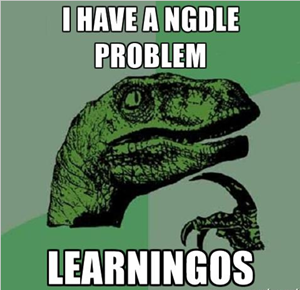
We acknowledge the work of Next Generation Digital Learning Environments (NGDLE) as having moved the needle forward in discussing what lies beyond an LMS, but NGDLE faces some major challenges:
- NGDLE, the acronym, is nearly impossible to remember, and trying to pronounce the term is even more problematic (nig-del?). The ideas behind NGDLE need some better branding, something that the layperson can remember and that can inspire them. In order for the concept to propagate, NGDLE needs to be spoken about by instructional designers, faculty developers, and provosts — and will need a new name.
- The word generation when referring to technologies is confusing. Is a generation 20 years as in a human generation, or is it until the next software release? Next-gen will always be looking to a future time for the solution, whereas we may have the solution nearby with a smart implementation of current technologies. In addition, what might be next gen for one institution could be old news for another. We need to have a term that is not relative.
- Recent discussions on NGDLE have been technical and complex, including some of those in the July/August 2017 print edition of EDUCAUSE Review. Much emphasis is being placed on technical standards and IT architecture — which is necessary. In reality, many of those doing educational technology work in universities live in a different world. To include instructors, students, instructional designers, and front-line technologists in the discussion of technology's role in digital learning environments, we propose thinking of the NGDLE a bit differently — as a much simpler concept.
LearningOS addresses these NDGLE challenges by being memorable, simple, and timeless.
LearningOS: A Design Thinking Workshop
As we began to work with this new idea, we needed to broaden the conversation to include others with experience in colleges and universities and within the learning technologies industry. At the ELI workshop we gathered to articulate the challenges of existing learning platforms, use a design thinking process to conceptualize an NGDLE (LearningOS), and create next steps to apply at one's home context.
What was your best experience as a learner instructor or designer with the LMS?
"My best experience happens when the LMS actually does what I want it to do, and actually does what the students need it to do :-)."
"Pushing the LMS creatively beyond its prescriptive structure."
What did participants find valuable about this workshop? Some of them work at institutions migrating from one LMS to another, some are front-line technologists supporting faculty and students, and others are innovators and edtech vendors. What we all had in common was that, regardless of our role, we think critically about the use of technology in learning and seek a better LearningOS.
The workshop used an abbreviated design thinking process, asking participants to empathize with their stakeholders, define the problem they are trying to solve, ideate solutions, prototype ideas, and test a pitch to the room.
In the empathize phase, participants received the responses to a pre-workshop survey that had asked, "What are the current challenges related to your LMS and/or its implementation?" The responses often addressed the question "What is wrong (or right) about your current LMS?" Reading through the responses and then synthesizing them in small groups allowed people to see not only their own challenges but also those of their colleagues at other institutions. The responses identified faculty, administrators, data analytics specialists, and students as all having a stake in LearningOS.
In the next phase, defining the problem we are trying to solve, teams received responses to the pre-workshop survey question, "What are the top three learning problems that a LearningOS needs to solve?"
Learning problems that need solving:
-
"Collaboration, communication opt-in options, integration of content, and assessment"
-
"Supporting various pedagogical models and didactical processes"
-
"Integration of separate tools and applications to support learning"
-
"Personalization (adaptive learning)"
-
"Just-in-time learning"
-
"Integration of content, activities, assessment"
-
"Getting faculty buy-in to use its features"
-
"Collecting data that is useful both at the micro- and macro-analytic level"
-
"Easing the learning curve without over-restricting the options"
Teams then moved to the ideate and prototype stages, working to get their ideas into a visual format. Some teams produced prototypes representing features and core values, such as user friendly, social, and open educational resource integration.
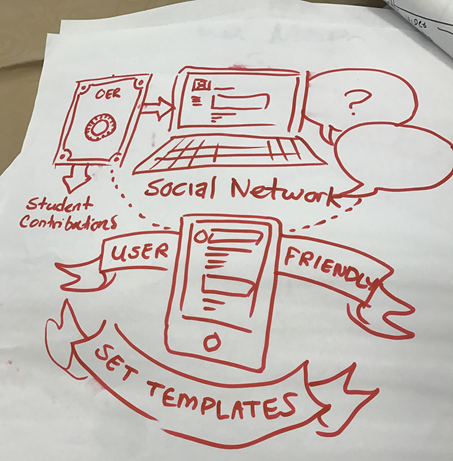
Other designs were more abstract, such as a mobile phone taped to a sheet of paper. This might represent a mobile first or mobile only approach; perhaps it suggests that smartphones are a highly personalized environment that the user controls directly by adding only those apps considered useful/needed. The original NGDLE white paper explores this smart phone parallel (in the section "New Architectures," p. 3).
At the end of the workshop we asked participants to write key takeaways from the session on a postcard. The postcards were sent to them two weeks later as a reminder of the discussions of the day.
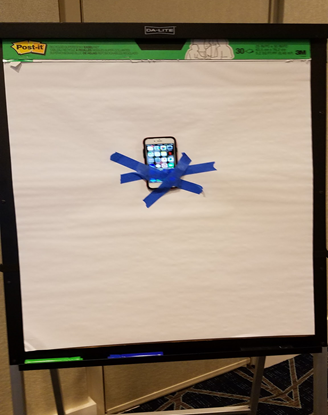
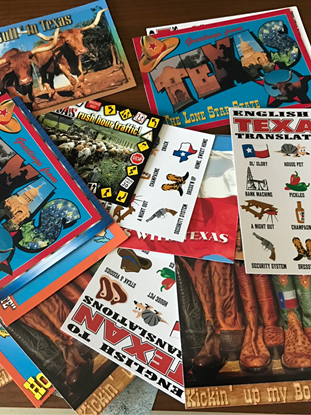
Is the LearningOS Already Here?
A few initiatives have begun to move the needle in the direction of a LearningOS. Some might claim that it is just a matter of correctly implementing the LMS or a collection of tools you already have in a flexible away and allowing for more opt-in than opt-out. Opting in allows instructors or students to think first about what they are trying to do and then choose the appropriate digital tool. Opting out puts a burden on instructors and students to understand tools they don't need in order to remove them from the digital learning environment.
A new initiative that connects to the LearningOS ideas is Tsugi, an incubation project from the Apereo Foundation, Tsugi aims to build a framework to implement LTI. The project's bold ambitions aim to allow an instructor to "unshackle" themselves from any LMS. This would permit authoring of content and assessments as independent items that could be connected anywhere. Tsugi can be used today, although it requires a significant amount of technical expertise because it's still more of a proof-of-concept than a product. However, the LearningOS takes a different philosophical direction from Tsugi. Instead of focusing on course content at the core, the LearningOS focuses on learning and activity (by gathering data through Analytics and recording it in the Roster). Content may be a part of this process (via LTI), but the primary goal is looking at the record of activity — which is what learning is all about.
Advancing LearningOS as a Framework
Thought experiments can help shape the manner in which we proceed, the technologies we develop, and the approaches to implementation that we take. Our process — writing about an idea, developing a workshop, and facilitating a discussion with colleagues — has provided some insight into what needs to happen next for the LearningOS to become more than a theory.
- Approach learning technologies as part of a diverse ecosystem designed to support multiple pedagogies. Institutions need to move away from thinking that one system will do everything. The reality is that if the system can't support all the teaching and learning happening at your institution, instructors and students will find somewhere else to do it. This creates fractured student experiences and situations where instructors are on their own. Conceptualizing learning technologies as an ecosystem, designed to support diversity, not singular unity, will help maintain a vision of a shared digital learning space. McGill University has used this concept of an ecosystem to help better communicate the wide array of learning technologies available to instructors. Their concept map categorizes tools into four pedagogical areas (content, course management, interaction, and assessment) and then maps it across rings of support (within the LMS, university-supported outside the LMS, and other unsupported tools outside the LMS).
- Do better at creating and adopting standards. Standards drive innovation forward. Projects like LTI, Unizin, and Caliper need acceptance across industries to ensure that standards can be designed, changed, and adopted moving forward. Not only do companies need to be held accountable to these standards, but the bodies creating these standards need to implement them better. Standards need to support more types of data than they currently do, and standards bodies need to be agile enough to move with the market. In addition, companies need to look at adopting standards instead of preferring to rely on their own APIs.
- Pick the right tool for the right purpose. Institutions need better analysis of learning technologies and how they can benefit learning. The Courseware in Context Framework (CWiC) is starting to do this by supporting postsecondary decision makers in effectively navigating the market of courseware solutions. An interactive version of the CWiC Framework has been embedded into the LearnPlatform, a "data-driven, peer-reviewed" index of courseware products. Using tools like LearnPlatform can help crowdsource quality. Tools can be promoted and shared not on their marketing prowess, but on their added value to teaching and learning.
- Focus conferences on challenges, problems, and questions, not exclusively disseminating solutions. We need to critically engage with our colleagues around LearningOS and digital learning environments. Fuzzy ideas should be workshopped at pre-conference sessions and then written up and developed further.
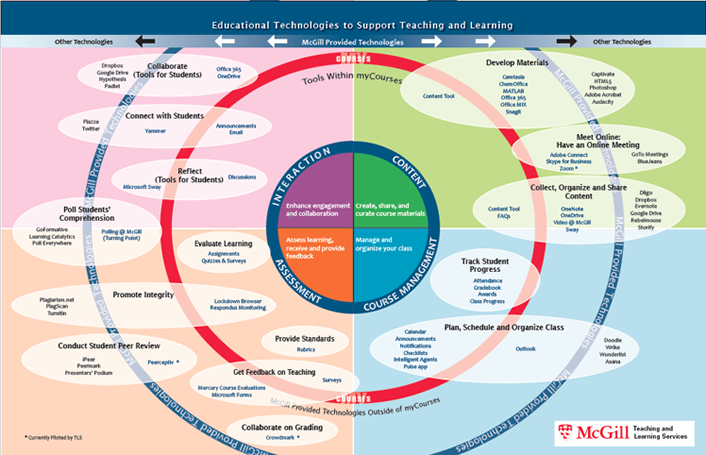
If we can start to tackle these four issues, we will be on a path to a learning ecosystem that supports teaching and learning in the now generation digital learning environment, LearningOS.
Michael Goudzwaard is a learning designer and program manager in Educational Technologies at Dartmouth College.
Adam Finkelstein is an educational developer and academic associate in Teaching and Learning Services at McGill University.
Rebecca Petersen is the director of NonprofitReady.org, an open online learning initiative of the Cornerstone OnDemand Foundation.
© 2017 Michael Goudzwaard, Adam Finkelstein, and Rebecca Petersen. The text of this article is licensed under Creative Commons BY 4.0.
